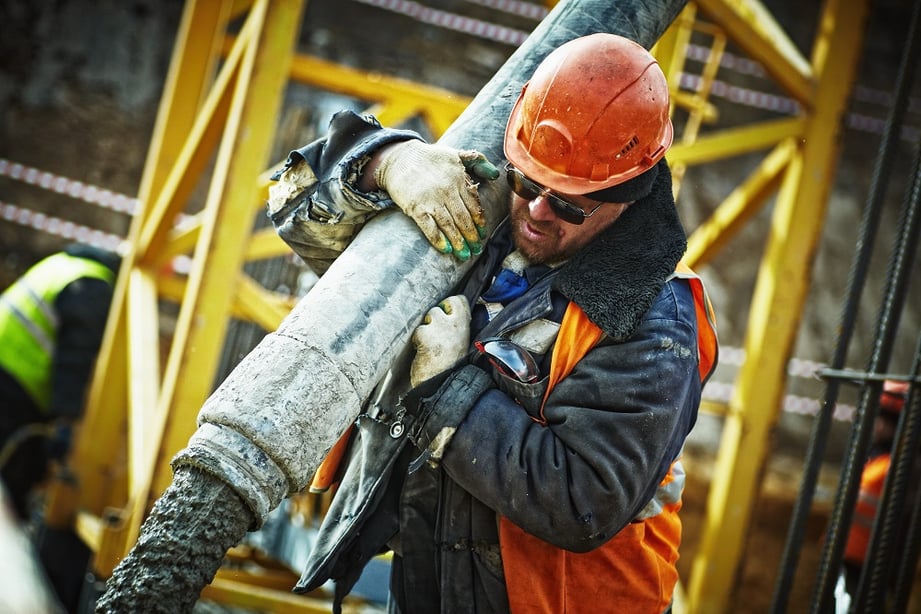Safety is a well-established foundation of doing business, but safety is increasingly seen as a key indicator of other positive attributes. Governments pass laws that mandate safe and healthy workplaces, for many it is a box ticking exercise, but for some it has become an established part of their culture, something that differentiates them. Now that leadership is being rewarded by customers and investors as safety becomes a decisive factor in where they put their money.
The Connection Between Safety and Businesses
Safe contractors are a sign of a well-run business. If your workers are safe, they aren’t missing shifts because of injury or medical needs, meaning your workers are more productive and your organization is more successful. This, in turn, makes your organization more attractive to investors and project bid evaluators.
In many cases, when an organization has a good track record for keeping workers safe it also has solid site management and material management processes as well. In showing that safety is important and allocating resources to using the right tools and creating the right culture, an organization also signals that they take their business seriously and are willing to put in the work to make it a success.
Real World Example – Metrolinx
More and more organizations are putting contractor safety at the heart of what they do. For example, at the 2019 conference of the Ontario Road Builders Association, Metrolinx CEO Phil Verster announced that the transit agency would begin to include safety records in its evaluations of project bids.
Read Also: Performance Evaluation: A neglected part of contractor management
Starting in 2019, Metrolinx will allocate 15% of its project bid evaluations to safety, with 10% designated for lost time injury frequency rates as tracked through WSIB and 5% based upon safety scores.
The change seems at least partially informed by Verster’s own observations of a disconnect between project bids that acknowledge the importance of safety and work site behavior that puts contractors at risk.
“Organizations pay lip service to safety and say, ‘it’s important,’ but when I get on site, you see an elementary lack of focus, an elementary lack of safety on site.”
However, Verster anecdotally mentioned that a strong safety record can be an indication of other positive organizational attributes. As he told the Daily Commercial News, “When an organization is focused on getting things right around safety, they get a heck of a lot of other things right as well.”
Verster’s new plans for Metrolinx also speak directly to the strengthening tie between contractor safety and organizational success, “Companies that we’ve worked with, either as a prime contractor or owner, that have a high focus on safety are the companies that do well, it’s just true. If you focus on safety and you’re diligent in safety, it flows through the rest of your organization.”
How then, do you put a higher priority on safety?
How to Keep Contractors Safe – a Prequalification Tool
 Prequalification is an invaluable and integral first step to creating a thorough and sustainable culture of safety. Since this step occurs at the very beginning of your procurement process, it provides a prime opportunity to address the topic of safety before it becomes an issue or puts contractors at risk.
Prequalification is an invaluable and integral first step to creating a thorough and sustainable culture of safety. Since this step occurs at the very beginning of your procurement process, it provides a prime opportunity to address the topic of safety before it becomes an issue or puts contractors at risk.
Think of a contractor prequalification tool as a business and risk management strategy, not as an expense.
Read Also: Contractor prequalification: An essential element of risk management and success planning
Think of it this way; while a well-qualified contractor with a strong safety record may be more expensive to hire initially, that contractor poses less risk to the company’s job site. This means higher productivity and less lost work time. As one participant in our recent white paper said, “Ultimately, prequalification is an investment, saving time and money in the long-term."
Prequalification can also instill confidence from investors. Use of a tool like this will ensure that contractors have project experience as well as an established safety record, systems and protocols in place to perform work in a safe manner. With large organizations like Metrolinx stating explicitly that safety will be part of their construction tender evaluations, use of a prequalification tool can help you show your safety record, giving you an edge against competing companies.
We know that there is a moral case to keep workers safe, but it is becoming more and more clear that there is also a strong business case for safety in the workplace. As procurement processes and investors look to safety records in evaluating their options, companies should make use of resources like a contractor management system to not only keep workers safe, but to bolster their business prospects as well.


 Prequalification is an invaluable and integral first step to
Prequalification is an invaluable and integral first step to 


